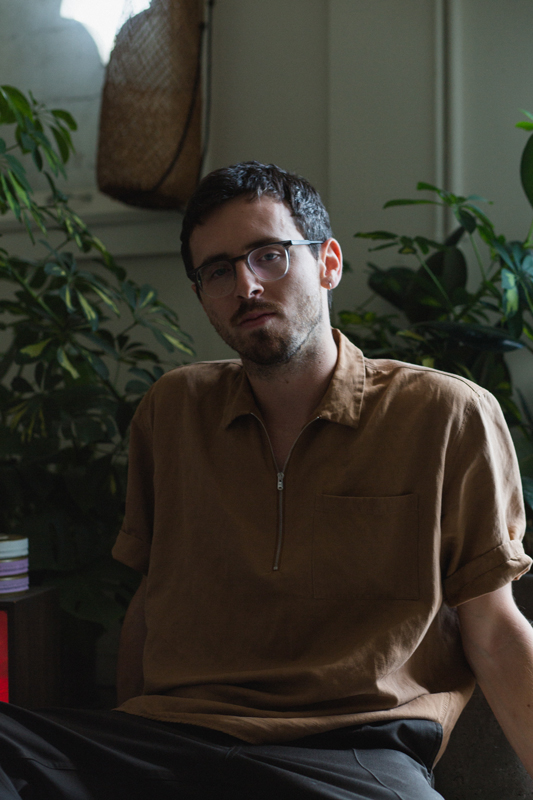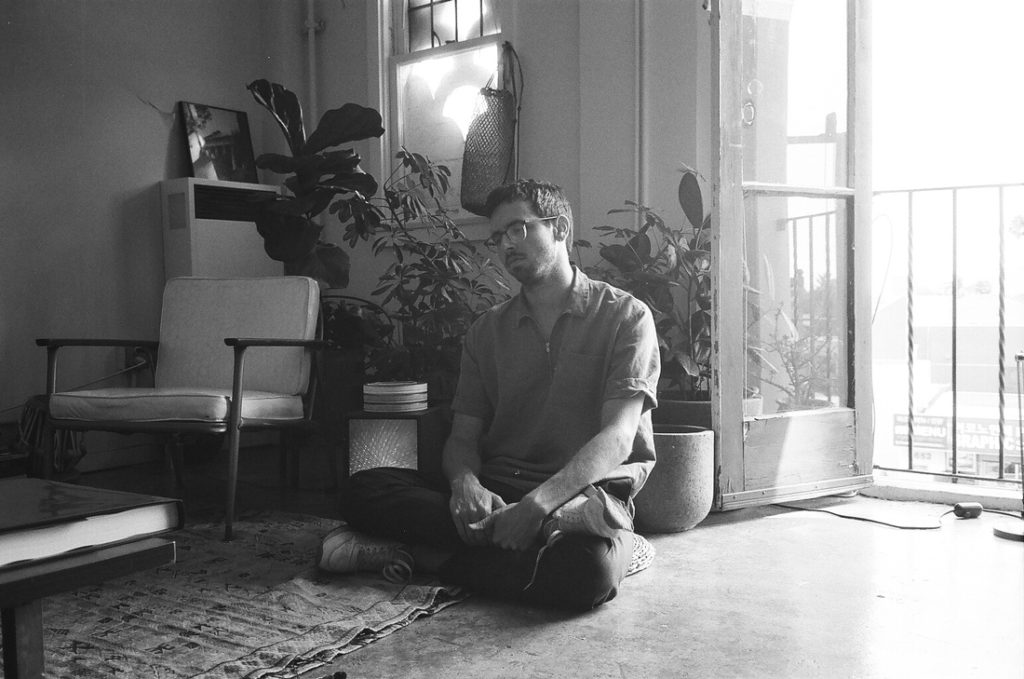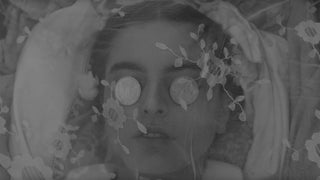In 1998, Ted Hughes, who was poet laureate of the United Kingdom at the time, published a collection of poems entitled Birthday Letters. Released in the months before his death, this was the first time Hughes had published work specifically addressing his relationship with the revered American poet Sylvia Plath. Though Plath had committed suicide thirty-five years earlier, the literary world was still consumed by the tragic nature of their love and perennially questioned Hughes’s involvement in her mental health decay. He remained aloof in his wife’s absence, but could never fully quiet the media’s inquisitions. The penultimate poem in Birthday Letters, “The Dogs are Eating Your Mother,” is addressed to their children, and presents the media’s fascination with her suicide as a foul reality. It’s blunt and visceral, using canine imagery to convey his position. The first line “That is not your mother, but her body” establishes his main point: that any true understanding of Plath can’t help but slip our epistemological grip, so leave the dead be.
Almost two decades later, Alex Takacs, also known as Young Replicant, was staring at this poem and thinking of ways to incorporate it into a music video for alt-J’s “3WW” off their recent album Relaxer. He’s used to accommodating artist requests, having directed music videos for Flying Lotus, The xx, M83, Purity Ring, Lorde, and many other artists over the last ten years, but this one was unique. The band wanted the poem’s macabre themes intertwined with the sexual misadventures described in the song for the music video. “For a second, I thought they might be fucking with me,” he admits on the sidewalk in front of a quaint Larchmont coffee bar. But after spending some time with the poem and lyrics, he started to see that although the two had little in common content-wise, that they both “shared a dark sensuality and morbidity,” forcing him to dip into thematic territory he may have otherwise avoided. “Sometimes I have to keep approaching a video treatment from different angles until it reveals itself,” he says.
“3WW” places us at the gloomy apex of a romance between Romeo and Juliet-inspired characters Ramon and Julina, before the latter’s passing. A pack of wild dogs attacks Julina’s corpse, incorporating the Ted Hughes poem’s imagery. Alex explains, “The song itself has a Bela Tarr feel, which gave me the idea for the slow funeral procession we see in the beginning. We were either gonna shoot in Mexico or Kiev… [but] when they sent us pictures of Real de Catorce [in Mexico], I knew we wouldn’t be able to get the feeling of that place anywhere else in the world. I wrote the intro script the night before, while I was on the plane flying to the location. I was that altitude high, just on a plane feeling weird and emotional and that’s what came from it.”
“I’m of the philosophy that all the money should go in front of the lens.”
Alex does most of his music video work pro bono, opting to use his director’s fee for the shoot itself. “You don’t make as much money off of music videos as you would think,” he explains. “I’m of the philosophy that all the money should go in front of the lens—it’s not worth the time and the effort to keep that money leftover for the director fees. I’d rather put it to use so the video is the best it can be.” The quality and legitimacy of his visual work instead are what drive him. “The directors fee is the first to go,” he explains. “There’s usually some prop or location that I get fixated on and can’t do without. There’s also a bit of guilt involved. It’s the sense that I’m the one who concocted this expensive, unwieldy idea nobody really asked for, so I should be the one financially responsible for it.”

Alex Takacs. Photo by Sos Adame.
Originally from Toronto, Alex grew up in Los Angeles, just blocks from the cafe serving as our meeting spot. His family was deeply involved in filmmaking, exposing him to the nuances of makeup, wardrobe, and lighting, so by his teenage years, he was beginning the process of working towards his directorial debut. “I built a stop motion animation set in my parent’s living room,” he remembers.
Movies play an indispensable role in his development. He sees it as cliche, but can’t help citing the work of Ridley Scott and Terry Gilliam as childhood inspirations: “I got sucked into these movies at a young age. They presented these fully realized worlds that felt like they could extend infinitely beyond the frame. There are so many rich narrative details buried in the production design that you want to keep living in it. They have the power to create a nostalgic attachment for a time and place that doesn’t even exist.” Blade Runner’s influence on Alex is obvious enough from his creative persona, Young Replicant, borrowing Ridley Scott’s term for the genetically-altered biorobots of the film. “It’s beneficial to don a creative persona,” he explains, “It allows you to take risks that might have been personal.”
The story behind “Young Replicant” is that he and his creative partner Joe Nankin were forced to come up with a name for themselves during a YouTube competition. It was a contest to shoot the music video for M83’s “We Own the Sky.” As the deadline approached, they thought it beneficial to remain anonymous. “We always intended on changing it, but then all the music video executives were like, ‘This name is so cool,’ and I couldn’t believe it, really,” he says. “I got used to it and it became part of me. From a design standpoint, I wanted to build a certain aesthetic and atmosphere that might’ve felt goofy and affected if I was using a legal name. The pseudonym turns it into a visual project that I can step away from and analyze from a distance… Maybe that’s a cowardly way to deflect creative ownership, but I see it more as a psychological tool to loosen inhibitions and thwart self-censorship.”
“[Films like Blade Runner] have the power to create a nostalgic attachment for a time and place that doesn’t even exist.”
Alex and Joe won the contest because their entry captured the youthful essence of M83’s track. There was also a dash of that ubiquitous oddity that defines Alex’s videos, though he claims it was “unrefined” at the time. This win led him into his second year at UCLA with momentum, studying English and graphic design. The next step was supposed to be completing the school’s film program, but he was denied entry the following year. “It upset me at first,” he admits, “but I look back on it differently now. My friends that were accepted ended up hating it, and I was still enjoying the design program, so I guess it worked out.”
After graduating with a degree in graphic design, Alex and Joe signed to Pulse Films, a collective featuring other innovative directors such as Kahlil Joseph and Sam Pilling. They would direct one more video together—“Chained” by The xx—before parting ways in 2012 to “develop [their] own independent voices as filmmakers.”
Moving forward, Alex continued to refine his directorial skills, using the means of expression he learned as an English major and his childhood affinity for epics, which led him to express his ideas a little differently: “I always intend to come from an intellectual standpoint, especially when I’m writing treatments, but I have to work to curtail that a bit. I don’t want to be overt with the psychological animus behind any of my ideas. I want to make it simpler, more poetic.”
I asked Alex to further reflect on this balancing act and give explanations for a few of his videos:
Flying Lotus – “Coronus, The Terminator” (2015)
The music video for Flying Lotus’s “Coronus, The Terminator” is a “sit-down” meeting with mortality. Shot as a deathbed vision, it follows one man’s haunting encounter with a boy and his companions. At the time, Flying Lotus was coping with his mother’s death, so Alex’s vision was an attempt to coincide with his headspace. It’s cutting in a way that bypasses formalities and punches you with existential absolutes.
On Flying Lotus’s involvement:
“He wasn’t super involved in the treatment writing and pre-production stage, which I think made him a little nervous because he’s pretty hands on with his other videos. It was a very personal track for him and he wanted to make sure I wasn’t fucking around and blowing it off… Once he came to set and saw what we’d been building towards, I think he warmed up to the idea and we became friends. In terms of the concept, it was just something I pitched to him. I took the themes from his music and the album art and gave it my own spin. He was adamant about incorporating the dance elements, which was a brief but really important addition.”
On the costumes:
“The white faces were inspired by Japanese Butoh dance… It was a way to make the characters seem like they were from some other reality, an in-between world that reflected aspects of our own. I thought the way they moved with the powdery residue looked cool was interesting, though there’s no overt symbolism behind it.”
Purity Ring – “Begin Again” (2015)
Speaking with Alex gives you the sense that he aims for longevity with his work. “I don’t want to be part of the ‘turn-and-burn’ ethos of video making,” he says. His 2015 collaboration with Purity Ring reflects that, visually and thematically a comment on antiquated Puritan values and the reviving of old myths. It feels like black magic reincarnation.
Alex on his inspiration for the video:
“I think the inspirations for this one were medieval botany and the Hieronymus Bosch “The Garden of Earthly Delights”… The video is grotesque in a way. Purity Ring is very bodily, using metaphors of the flesh, so it felt appropriate to approach it from a ‘body-horror’ direction. We had these incredible props made by Sarah Sitkin, a talented artist with this uniquely grotesque style. She constructed those ‘flesh fruits’ and I was actually disappointed we didn’t shoot them more. Just in the shuffle of the day we didn’t get around to it. They’re in there, but not as much as I wanted.”
“Purity Ring is very bodily, using metaphors of the flesh, so it felt appropriate to approach it from a ‘body-horror’ direction.”
On the importance of collaboration and recognizing subtext:
“On this one I worked closely with Meghan of Purity Ring. Together, we deconstructed the narrative and tried to tweak the gender dynamics to create something subversive. It can be easy fall into unintentionally lazy, sexist tropes, especially in the music video world where you don’t always have the benefit of a strong narrative or fully fleshed out characters who speak. People tend to become props and symbols. But Meghan and I wanted to create a cloistered, medieval world with a feminine, cyclical spirit—a place that played with archetypes and role reversals. It’s always great to work with artists who understand subtext and have a conscience about what sort of ideologies they spread within culture.”
Lorde – “Team” (2013)
Lorde’s “Team” has been Alex’s most-watched video to date, gathering over 155 million views in the last four years. Still, it’s informed with the same storytelling ethos of his other projects. Regardless of genre, Alex wants to show the raw experience of being human, while sprinkling in bits of magic:
“The idea for Lorde went through a couple revisions when our shooting location moved from LA to NY at the last minute. The song ‘Team’ is about belonging to a tribe, a chosen family you find while growing up. Ella was adamant about including a spa-like environment where societal norms were suspended and re-imagined. I saw it as a great opportunity to play with coming of age rituals and secret initiation rites.”
The xx – “Fiction” (2012)
Fresh off of their 2012 release Coexist, The xx collaborated again with Young Replicant for “Fiction.” The video follows bassist Oliver Sim through the remains of a debaucherous party and his fascination with an unclear light source.
“That was an interesting situation. It was a one-night shoot. I remember feeling that post-shoot depression, which happens every time to an extent, where you question all the decisions you made and think about the shots you didn’t get. You have to put on a mask almost and convince yourself everything went well. That one was pretty tricky, though. It was a 16-hour shoot, sunset to sunrise. It was my first night shoot as well, which isn’t something you can prepare for, the sort of weird dementia that sets into everybody. You’ll do take after take and you don’t realize ‘why’ you’re doing it. 4 A.M. hysteria shit.”
“The main disappointment of that was the moving light source itself. I wanted to have a fake moon then move it across the desert. We rented a Musco light, which is basically a huge crane with stadium-style lights on the top. It turned out the truck itself couldn’t move once the crane goes up. All we could do is swing the light and pan it. It ended up looking like a fade-up and fade-down situation with the light and we didn’t need all of that equipment. We got obsessed with this idea of having massive shadows cast across the landscape, but it ended up just being a light that comes on and off. It’s subtle, but that has its own benefits.”
It’s a sleeper favorite in Alex’s personal ranking of his work. Given his initial frustration with the technical situation, it’s a sobering reminder that unplanned adjustments are sometimes the best path.

***
Moving forward, Alex wants to expand to the narrative storytelling of feature films. He tells me he has one more music video, his first shot on 16mm film, then he plans to explore ways to pivot his creativity. “I’d be interested in working with VR too,” he says. “I know that’s the big, lame buzzword, but whenever I’ve put on a headset, it’s almost like a lucid dream if you’ve ever experienced that. [Lucid dreams] allow you to test the nature of the dream-fabric so to speak. I’ll examine the detail in an object, turn away from it and then look back. It often retains its composition, which is fascinating, because that means some part of your mind is generating this image and holding it together. VR in fully CG environments gives me the exact same feeling.”
It sounds like the same inspiration that captivated his younger self watching films like Blade Runner, Alien, and Brazil. Regardless of the medium he uses for visual expression, he has an indelible ability to capture the humanity of his subjects. Once the coffee disappeared, Alex and I parted ways, but not before he left me with a final thought: “I always try to make it ambiguous. You only have three minutes so it’s more worthwhile to leave things unfinished. [Like] the way a poem can have these half-thoughts and the reader is forced to insert their own associations.”
Visual poetry is the goal, and though he’ll be trading his elegies in for epics soon, the spirit of his filmmaking will only grow bolder.
***
Follow Alex’s work at youngreplicant.com and on Instagram @youngreplicant.
Photos by Sos Adame.

